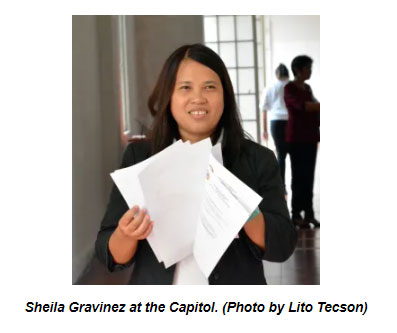They’re multi-media journalists who straddle platforms. Or ex-journalists who crossed to the publicists’ side.
‘Trans-journos’
They’re multi-media journalists who straddle platforms. Or ex-journalists who crossed to the publicists’ side.
KEVIN A. LAGUNDA
Sept. 13,2019
Their work has shifted from newsroom to public information office; from reporter to publicist; from being watchdog of public officials to protector of the officials’ public image. They must spread the ‘good news’ about their employer. Yet, they say, they ‘must still be truthful.’
THE Kingdom and the Power, Gay Talese’s 1969 book about the workings of The New York Times, opens with a pistol-shot of truth about journalists.
The most quoted part runs: “Most journalists are restless voyeurs who see the warts on the world, the imperfections of people and places… Gloom is their game, the spectacle their passion, normalcy their nemesis.”
But what happens when circumstances force a reversal of roles where they, who were once trained to spot official misconduct, become public information officers (government-speak for PR persons) paid to hide those “warts and imperfections?”
Are they resigned to do what is required of the job: to ward off controversy or scandal that may stain the boss’s public image and, when crisis comes, to do damage control?
Or do they still become restless when seeing impropriety, inefficiency, misfeasance, and malfeasance? Do they miss their former journalist selves and the reportage of murders, scandals, calamities, and others?
Transjournalists are into multiple media: they who straddle on print, radio and TV platforms.
The term may also apply to journalists who have transitioned to being publicists. They are highly valued because of skills honed by media work but may now be conflicted because values learned in mass-comm school and reinforced in the newsroom tend to clash with requirements of the new job.
Highlighting the good

Shiela C. Gravinez, who left her job reporting the news for a local paper to write for the Cebu Provincial Information Office (CPIO), said the immediate difference is that she now works to “highlight the good.”
But the 2017 Cebu Archdiocesan Mass Media Awards winner for “special writing in Cebuano” quickly stressed that she still writes the truth — a journalist’s first obligation according to Rosenstiel and Kovach’s Elements of Journalism, a standard text among journalism schools.
“Unsa gyoy unod sa interview mao ray isuwat. Dili na dugangan. Kon unsa gyoy tinuod nga istorya maoy ipagawas. Abi kay pahumot, dugangan ang istorya (Write only what the interview contains. Do not embellish. Write only what transpired. Just because we write PR doesn’t mean we make up stories),” she said.
No longer journalism
“Unsay among ipagawas mao na ang tinuod (What we put out is the truth),” said the incumbent assistant public information officer to Mandaue City Mayor Jonas Cortes, with whom he also served as legislative assistant when the latter was still 6th district congressman.
Incidentally, Rosenstiel and Kovach’s “truth” isn’t about perfectly relating what a source says. After all, a lie accurately retold does not become true.
Nevertheless, not having to lie is a good start, believes Monching who still considers it his job to “avoid telling lies” while relaying the exploits of his principal. He says that what he does now is no longer journalism but it isn’t too far from journalism.”

Monching Auxtero during his time as Balitang Bisdak reporter. (Photo contributed)
He says he still has to be “honest-to-goodness” accurate when he relays his information, just like back in the day when he gathered and presented news alongside such names as Bobby Nalzaro, Rose Olaño-Versoza, and Cecile Quibod-Castro in GMA 7’s Balitang Bisdak.
Not to worry about lying
Lying is one thing that Lesley Caminade-Vestil too says she does not have to worry about, given the guy she has to work with — Talisay City Mayor Gerald Anthony “Samsam” Gullas.
The young scion of the Gullas family, who for years have dominated Cebu’s first legislative district, is tech and social media savvy. So much so, Lesley said, that her job becomes merely “reporting on the mayor’s activities and achievements and also create content that we post on the city’s social media account.”
Work experiences
Like Gavinez and Monching, Lesley is a former reporter with a storied career complete with awards and recognitions.
They come from the same school, the University of San Jose-Recoletos, where Lesley also met classmate-turned-husband Justin Kintanar Vestil, SunStar Cebu reporter who now serves as its social media editor.

Lesley Caminade-Vestil with dyLA station manager Jhunnex Napallacan. (Photo contributed)
Lesley’s media work began right after internship at Freeman and Banat News. She was absorbed by the management following the strong recommendations of editors Edwin Ian Melecio and John Rey Saavedra, who now works with the Cebu branch of the Presidential Communications Group.
While reporting for the paper, Lesley got hired by radio DyLA, where she wrote and delivered broadcast news, tried her hand at program-handling, and served as deskman (editor and re-write person in broadcast journalism’s politically incorrect shorthand).
Her experience in Freeman and DyLA made her one of TV 5’s first picks when the Manuel V. Pangilinan-led network re-launched their station here in Cebu — the former ABC 5 — and opened their FM station, Radyo Singko.

Lesley Caminade-Vestil at the PIO. (Photo contributed)
Lesley was a reporter, researcher, deskman, and, eventually news director for the station that eventually closed purportedly because of losses.
Following the closure, Lesley returned to dyLA and began stringing for Manila Bulletin. At nights, she worked at a local call center.

Monching’s departure from the news media, on the other hand, was voluntary but not without compelling reason.
He said he had planned to go abroad but relented.
And sometime after he left in 2013, GMA 7 implemented “right-sizing” in their regional stations. Even those reporters who have worked with the station for decades were let go.
With a very refined skill at visual story-telling and a knack for knowing what ordinary people wanted to know, Monching found himself becoming tourism officer for Bien Unido, Bohol.

Monching Auxtero with Mandaue City Mayor Jonas Cortes. (Photo contributed)
Lzater, he joined the legislative office of Jonas Cortes who, at that time, was preparing to make a return run to Mandaue City Hall as mayor.
Media ‘still do most of the work’
Oscar C. Pineda, a legend among police beat reporters in Cebu, seems the most at ease with the transition among the “trans” journalists interviewed. Maybe because he has clocked more time as publicist than the other journalists now doing government PR.
After retiring in 2016 from SunStar Cebu, where he had worked as a reporter for two decades, “Oka” immediately was hired as writer for the Cebu Provincial Information Office, Gravinez’s current office.
Now, Oka is PIO to Lapu-Lapu City Mayor Junard “Ahong” Chan. And he is as unequivocal as can be when explaining his job description — conveying the “good points and unique qualities” of his principal.
Incidentally, a big part of Oka’s time in SunStar Cebu was spent covering Lapu-Lapu City, where Chan was city councilor before getting elected mayor last May 2019.
When asked if he would seek the truth as the PIO, he said: “I seek what is beneficial to Mayor Ahong.”

Oscar C. Pineda with Lapu-Lapu City Mayor Ahong Chan. (Photo by Allan Cuizon)
“Media nay bahala pagkulkog, ug igo ra ko mopakita sa brighter or positive side of the truth (It’s media’s job to look deeper into things. My job is to show the brighter or positive side of the truth),” he said.
And Pineda won’t release information that might bring down Chan. Of course, he is no longer a reporter. He is the PR guy. Besides, he said, isn’t he also serving the media by giving them stories for public consumption?
Quick exit, adjustment
On the opposite side of the Mactan channel, at Cebu City Hall, the new PIO is also a former reporter of SunStar Cebu. Razel Cuizon, a third year law student who even had time to run for president of her school’s law student body, says she has minimal worries as chief PIO, she said, because Cebu City Mayor Edgardo Labella and others in the government “believe in and do good governance.”
Transitioning from reporter to PR was quick for Cuizon.
“Things just happened so fast. I resigned from my work as a journalist last June 30, and I immediately took over as the PIO of the Cebu City Government last July 1,” she said.

Razel B. Cuizon. (Photo by Alex Badayos)
Difference in two jobs
As PIOs, Gravinez, Auxtero, Vestil, Pineda and Cuizon’s main task is selecting, framing, and presenting stories that will depict their principal in the best of light.
While doing that, they will also be cultivating relationships with journalists and gatekeepers to ensure that the stories they select, frame, and present gets delivered to audiences.
On the filter by editors and other media gatekeepers, they likely won’t mind if the stories get cut, merged, or edited, so long as the outcome remains positive at best or inert at worst for the public image of their principals.
They all contend that they are still serving the public with the information they deliver.
As Vestil puts it, “Even though my work entails protecting the image of our mayor, my work is also aimed at informing our constituents of what he and his administration is doing for them.”
Back to American journalist and author Gay Talese, who talked about journalists being “voyeurs” watching “the warts and imperfections.”
To the “trans” journalists — former journalists who are now publicists — the difference between journalism and PR work must be clear: Reporters and editors expose the ugly things in the world. Information officers try to hide or lessen the ugliness. 

Kevin Lagunda
Kevin A. Lagunda, a regular contributor to CJJ Magazine, is also news reporter and sub-editor at SunStar Cebu.
